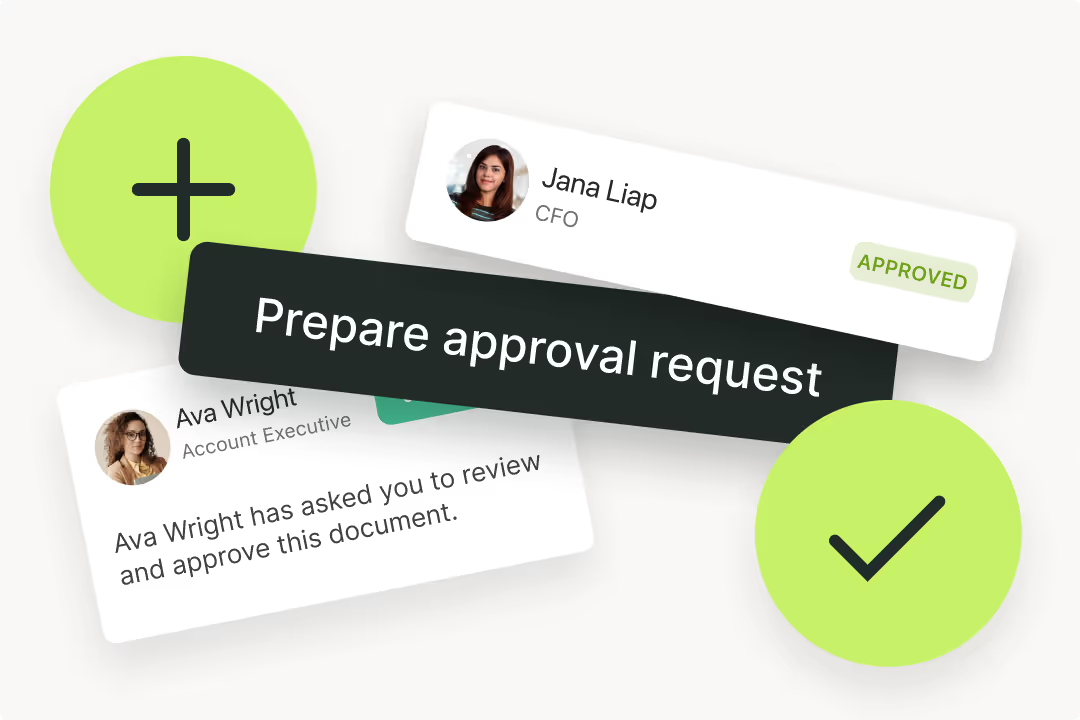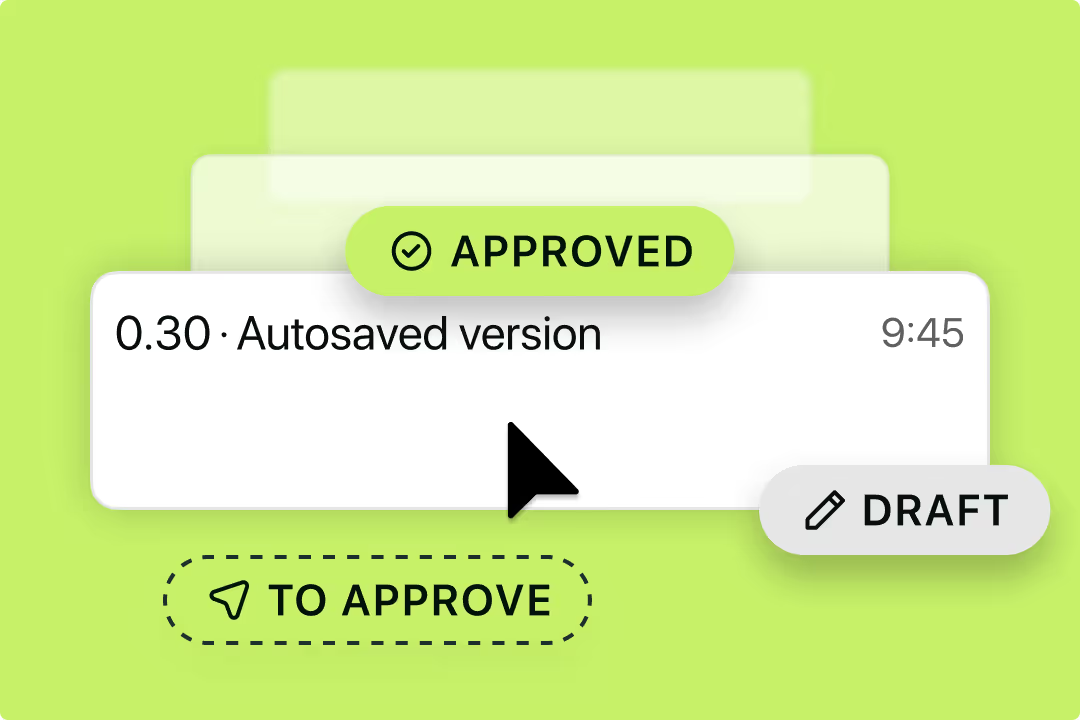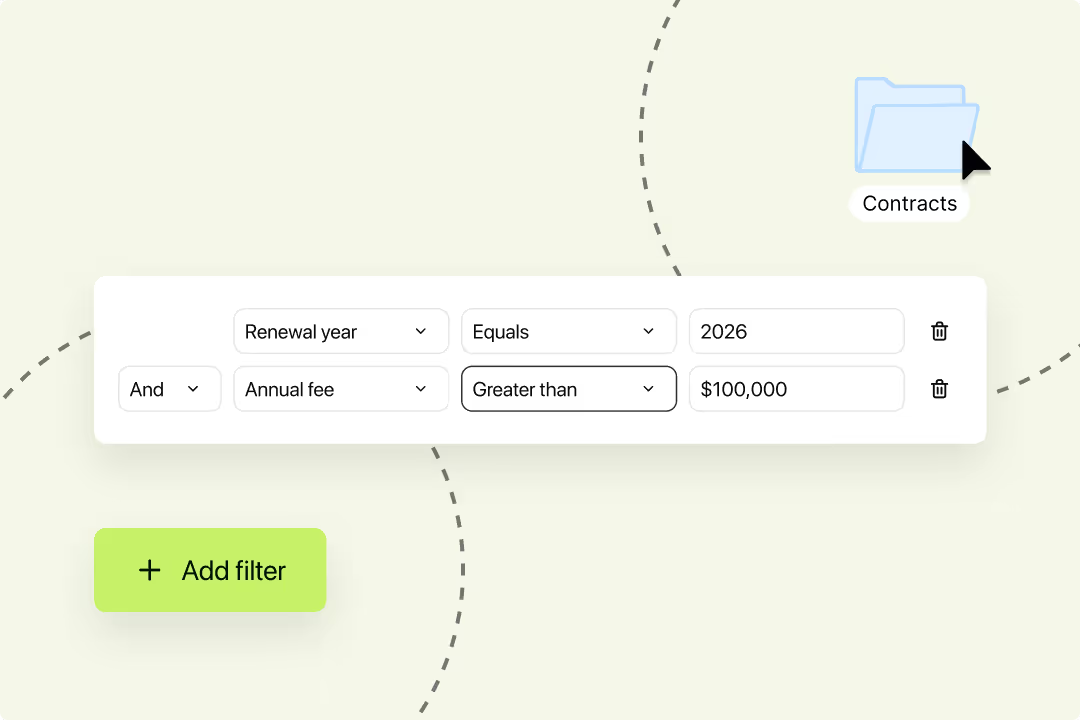Solutions
Customer Support
Resources
Increasing contract volumes are a positive sign.
It means business is picking up and deals are getting closed. But how do you track these contracts as they progress through the contract lifecycle?
This guide answers that question, and more.
Contract tracking describes the process used to identify where a contract is in its lifecycle and whether any action is required to progress it.
The maturity of this process varies wildly between different businesses, with some reliant on disorganized shared drives and manual review, and others are fully automated, making tracking contracts effortless.
If you find yourself stuck in the first category, you’re not alone. 90 per cent of stakeholders struggle to find their agreements using their current process, and almost half of businesses admit to lacking a definitive process for contract storage post-signature.
Visibility remains an uphill battle for most legal and business teams - even in 2026.
Contract tracking is important because a lack of visibility into contracts, and the processes used to manage them, creates the following problems:
The longer you neglect contract tracking, the further into the void your contracts fall, and the harder these risks become to address. Fortunately, you have a few options.
Before you can start to track your contracts, you need to understand what tracking looks like for you in practice.
Do you want to track upcoming renewals? Do you want to identify bottlenecks and improve contract management? Do you want to track average contract value, or other contract metrics?
How you answer these questions will shape your approach and the tooling you require.
{{quote1}}
For example, if you’re looking for a better way to track and reduce missed renewals, you’d benefit from a solution that offers automated contract reminders.
Similarly, if you’re looking to identify opportunities to increase efficiency, you’ll want to find a way to confidently measure things like time-to-sign and contract review durations.
Begin by identifying your pain right now and work from there.
Once you have a clear picture of what success looks like in the context of tracking your contracts, you’ll also be able to weigh up the options available to you.
If you only manage a handful of contracts a year, it might not be necessary to kick off a software deployment. Instead, you can get to base camp and have visibility across the lifecycle by starting with something like this free contract repository spreadsheet.
But if you do have more substantial contract volumes and higher stakes, adopting contract management software like Juro will dramatically improve your current process.
{{quote2}}
This is because Juro provides a single source of truth for contracts, along with structured search functionality, granular access controls, advanced contract reporting, and custom contract dashboards.
To see Juro in action, hit the button below. Otherwise, read on to explore the features offered by contract tracking systems, and how they will transform contracting for your team.
The best way to simplify contract tracking is to reduce the amount of manual research and intervention required. The features listed below empower you to do just that, and you can find them all in Juro.
Approval workflows enable contract owners (usually legal teams) to make sure they approve each contract before it’s sent out to counterparties.
Keeping control is a key aim of contract tracking, and automated approval sequences can give legal back this control.

Juro users can also see who’s viewed, edited, approved or interacted with the contract, and when. They can also scroll back through the timeline and with access previous versions in just one click.
This is far easier than jumping between Word files and email chains to track changes.

If contract volumes are high, it’s useful to be able to arrange them in a table to quickly see their status.
A kanban view, like the below, is effective in helping teams to progress contracts quickly through the creation and approval process.
With Juro, you can also customize your contract dashboards using filters. This gives you effortless access to different views.

It sounds simple, but the ability to mention and prompt key stakeholders can really help move contracts along.
By mentioning a colleague with an ‘@’ in the sidebar, users can draw each other’s attention to a particular issue that might need their attention. This increases visibility as changes are made to the document.
In Juro, users can set custom reminders for relevant dates in contracts, to make sure they don’t auto-renew, or expire, without relevant stakeholders knowing about it.
By setting up reminders, users can ensure the right people get an email reminder and costly, unwanted auto-renewals are avoided.
Integrating your contract platform with Slack means it’s possible to set up notifications that alert team members in when certain actions take place.
For example, the #sales channel might want notifications when counterparties sign, or when they negotiate terms in the document.
Setting up this integration helps to make contract tracking visible for everyone - not just those who work with contracts every day.
{{quote3}}
Tracking your contracts doesn't have to be painful or expensive. Tools like Juro make contract data and versions quick and easy to access, so there's no excuse for missed renewals and costly delays.
To find out how Juro would work for your business, and how it can transform contract tracking processes, fill in the form below.
Lorem ipsum dolor sit amet, consectetur adipiscing elit. Suspendisse varius enim in eros elementum tristique. Duis cursus, mi quis viverra ornare, eros dolor interdum nulla, ut commodo diam libero vitae erat. Aenean faucibus nibh et justo cursus id rutrum lorem imperdiet. Nunc ut sem vitae risus tristique posuere.

